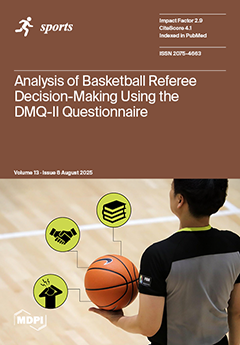Background: Taekwondo (TKD) athletes’ nutritional and health statuses and body composition are critical to their physical performance and overall fitness. In Lebanon, TKD is widely practiced; however, there is a significant gap in the literature regarding the nutritional and health profiles of its athletes. This study aimed to assess the nutritional status, anemia prevalence, body composition, and other health-related characteristics, among Lebanese TKD athletes. Additionally, it explored the determinants of normal hemoglobin (Hb) levels, blood pressure, normal muscle mass, and normal fat mass. Methods: A cross-sectional study was conducted between January and July 2023, involving 110 TKD athletes. Hemoglobin and hematocrit levels were measured to assess anemia, while body composition was evaluated using a bioelectrical impedance analyzer. Blood pressure was also recorded. Household dietary diversity was assessed using the Food Consumption Score, and additional data on sociodemographic factors, training frequency, and supplement or medication use were gathered through a structured questionnaire. Logistic regression models were applied to identify predictors of normal Hb levels, hypertension, and optimal muscle and fat mass. Results: Results showed that male athletes had significantly higher rates of normal Hb (
p-value = 0.013) and muscle mass percentages (
p-value < 0.001), while females had higher rates of normal blood pressure (
p-value = 0.002) and were more likely to use iron supplements (
p-value = 0.002) and painkillers (
p-value = 0.041). Normal fat mass was positively associated with normal Hb levels (aOR: 11.98,
p-value = 0.033). Female gender was linked to a lower likelihood of normal muscle mass (aOR: 0.13,
p-value < 0.001) and hypertension (aOR: 0.19,
p-value = 0.009). Higher training duration (10 h or more per week) (aOR: 3.46,
p-value = 0.04) and normal BMI (aOR: 4.93,
p-value = 0.003) were positively associated with normal muscle mass. Normal BMI (aOR: 14.68,
p-value < 0.001) was positively associated with normal fat mass. Conclusion: These findings underscore the importance of individualized dietary interventions to enhance athletes’ overall health and performance, through the optimization of athletes’ body composition, and the prevention of deficiencies, especially iron deficiency.
Full article






